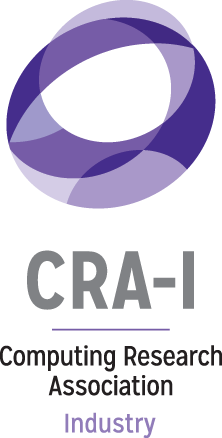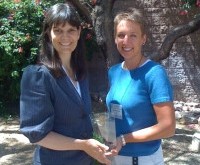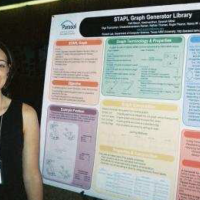Interview with Carla Ellis
Originally Posted in Summer/Fall 2008 Newsletter
 Carla Ellis recently retired as Professor at Duke University. Over her 30 year research career, she worked on systems for ranging from large multiprocessors to small, battery-powered mobile devices. In particular, she was a pioneer in the topic of energy management for computers. She continues to serve as Editor-in-Chief of ACM’s Transactions on Computer Systems, a board member of CRA-W and of the Computing Research Association (CRA), co-chair of NCWIT’s Academic Alliance, and on several technical program committees. We catch up with Carla to hear her perspective on her past career and plans for her future.
Carla Ellis recently retired as Professor at Duke University. Over her 30 year research career, she worked on systems for ranging from large multiprocessors to small, battery-powered mobile devices. In particular, she was a pioneer in the topic of energy management for computers. She continues to serve as Editor-in-Chief of ACM’s Transactions on Computer Systems, a board member of CRA-W and of the Computing Research Association (CRA), co-chair of NCWIT’s Academic Alliance, and on several technical program committees. We catch up with Carla to hear her perspective on her past career and plans for her future.
Q: From that list of on-going activities, it doesn’t sound much like “retirement” besides not being in the classroom, what has changed for you?
Two very important things have changed. First, I’ve moved. I’m living exactly where I want to be in the Pacific Northwest. I fell in love with this area while working on my PhD at the University of Washington in Seattle. Ever since leaving for the sake of employment, I knew that I wanted to eventually return here. I can work on my prior commitments remotely, with a view of the ocean. Hey, I even like the rainy weather! Second, I am free to pursue my new interests without the competing daily demands of a real job. My current two passions are
- Advocating for green computing and the role of com- puting in creating a sustainable society and;
- Encouraging the participation of women in computing. When I’m offered a new opportunity (and being retired suggests to some that I have lots of spare time), I may say “yes” to something if it can further one of those two goals.
Q: What do you mean when you talk about “sustainability” in the context of computing?
For the past 10 years, I’ve worked on increasing the en- ergy efficiency of computers. The first step toward sus- tainability is to design computing infrastructure to “do less harm” in terms of energy demand and wasted resources. This is critical whether the focus is on a battery powered smartphone or a monster-sized data center. My own early focus was on increasing the battery lifetime of mobile devices. Over time, my research has addressed the energy use of a wide range of components, from memory to displays to networking. Solving this problem will require contributions from many areas of computer science from low-level hardware design to application development. My new mission is to convince more computer science researchers to become engaged in these issues and to think about how their own expertise can contribute to sustainability.
Q: The systems research area is not known as being friendly to women. How did you get into systems?
I started grad school in computer science at UW in 1973 with no clear idea about what I wanted to do. I didn’t choose a research area and then a professor in that area, but instead chose my PhD advisor based on the person on the faculty I felt I could work with the best. Focusing on the working relationship with my potential advisor worked out great for me.
My advisor, Jean-Loup Baer, just happened to work in computer architecture and parallel processing. In the late 70s, I wasn’t aware of the different areas being any more or less welcoming to women. I embraced parallel computing as a topic and Jean-Loup was flexible in supporting my thesis as it evolved along a more software-oriented direction. So, I guess you could call it an accident that I ended up in systems.
Q: How do you see the systems field changing?
Technically, the systems field is always changing, driven by new applications on one side (e.g. social networking) and new architectures on the other (e.g. smartphones). However, an interesting change has been that increasing performance (translation: speed) is no longer the only accepted goal as energy savings, reliability, maintainability, and usability rise in importance. My sense is that these other environments and metrics may attract more women into systems.
The participation of women in systems has a complicated story. On one hand, the systems area is one of the sub-disciplines of CS&E with the lowest representation of women. On the other hand, the systems community has been engaged in the issue for a long time. It was at the premier systems conference in 1987 that the Systers community was born when all the women attendees came together for a meal which has become a tradition of that conference ever since. Last year, with the enthusiastic support of the conference organizing committee (and CRA-W funding), we held a workshop for women prior to the conference that attracted 75 women who then stayed through the conference. The SIGOPS community was excited about the event and appears to be committed to offering the workshop in the future. I’m proud of the response of the systems community to our efforts to make the culture more inclusive.
Q: How did you get involved with CRA-W?
I must say that working with CRA-W has been one of the most rewarding and fun roles of my career. It came about because of networking. Early in my career, my professional contacts were mostly all from the systems community. However, in 1995, I was elected as chair of ACM SIGOPS and I started attending the meetings of all the ACM SIG chairs. This allowed me to meet leaders from other sub-disciplines, including CRA-W board members Mary Lou Soffa (then SIGPLAN chair) and Janie Irwin (ACM Council and Vice President). Thus, what began as service to my own research community opened the doors to a broader network and an invitation to join CRA-W.
Q: You have spent your entire career in academia. What have you found to be the best and worst aspects of being a professor?
The greatest joy of being a professor at Duke has been watching my students develop and succeed in what they have chosen to do. My own PhD and Masters graduates are a continuing source of pride for me. It is rewarding to watch a student transform from a course-taker into an independent researcher and the expert on their topic. Each thesis project involves both the challenge of technical discovery as well as the growth of an individual with different needs from an advisor.
Academia prides itself on being a meritocracy. Certainly, we strive for excellence in ourselves and hold others to high standards. Professors are constantly doing evaluation – we grade courses, assess prospective students, scrutinize faculty applicants, review submitted papers and grant proposals, and write letters for tenure and promotion. It is frustrating to be involved in evaluation discussions with colleagues that take a negative tone and adopt narrow views of what “quality” is based on implicit biases and institutional tradition.
Q: Coming back to your retirement, what are you doing or planning to do that isn’t related to “work” or computer science?
My husband and I are building a house, while it doesn’t always go smoothly, the process has been much more fun than I ever anticipated. I’ve learned about green building, in general, and what works for our climate and our site, in particular. Once we move in, I’ll be landscaping with all native plants. My husband, Rick, will take over the new garage to build a wooden 2-person sea kayak for paddling in the bay.
And then there are the dogs. I have two Golden Retrievers and they each have their own out-of-the-yard activities. Sunny is a therapy dog. Every week, we visit an assisted living home where the residents just love him. He brightens their day and all he has to do is to get petted. It’s a tough job! This fall, Sunny and I will also be going into the public schools in a “Read to Rover” program where kids read aloud to dogs. My other dog, Dilly, takes classes in agility. This means she runs a course that goes through tunnels, across teeter-totters, and over other obstacles. She has a great time burning off energy and we enjoy socializing with our classmates, both dog and human.






